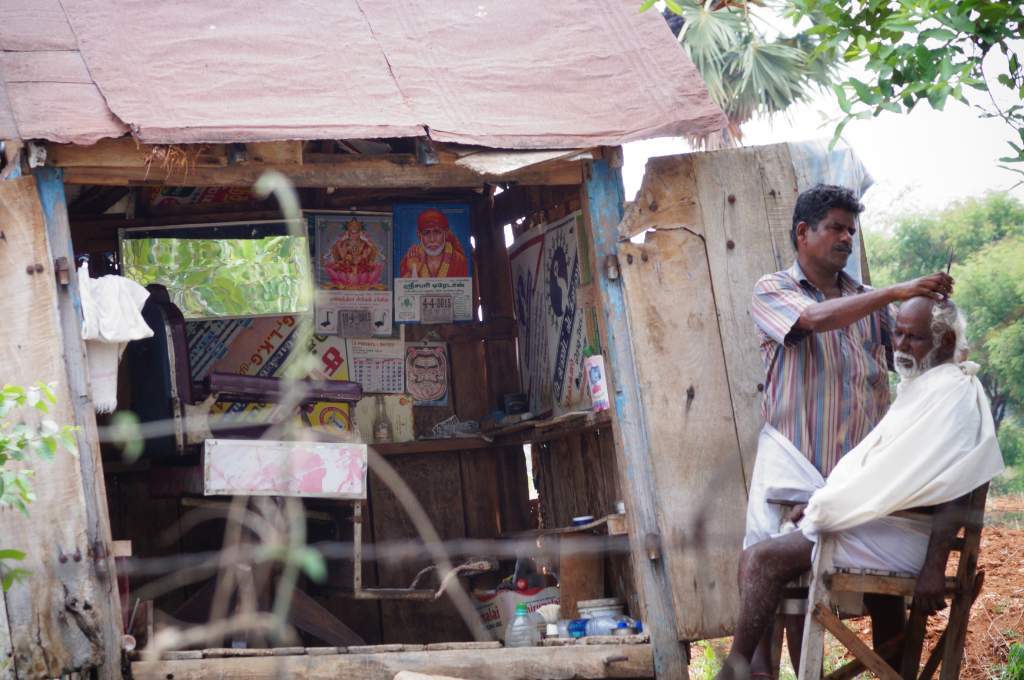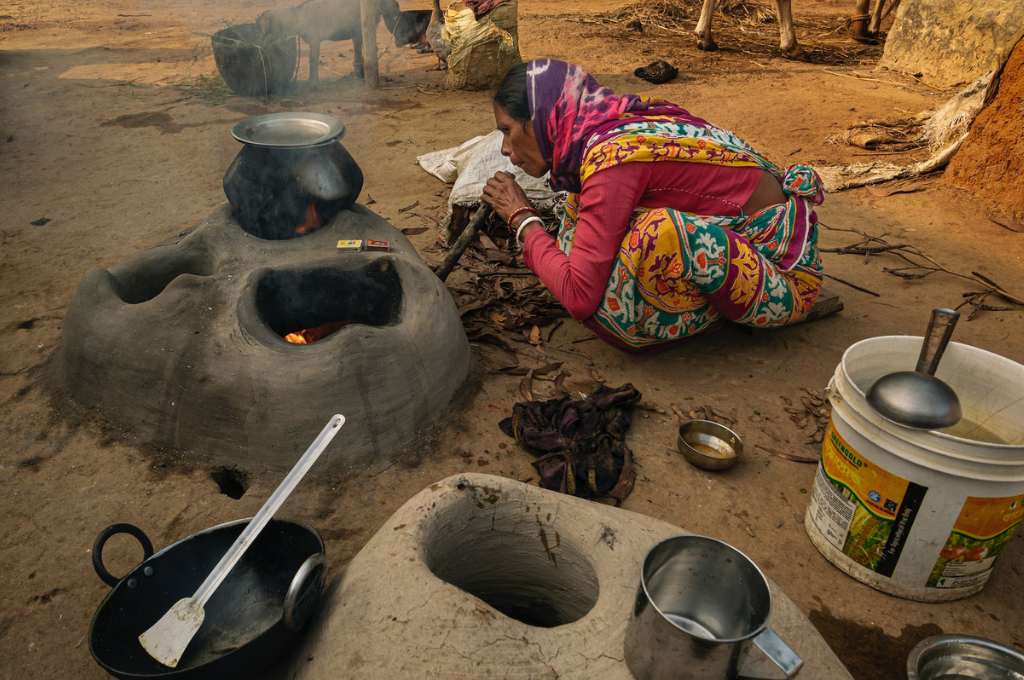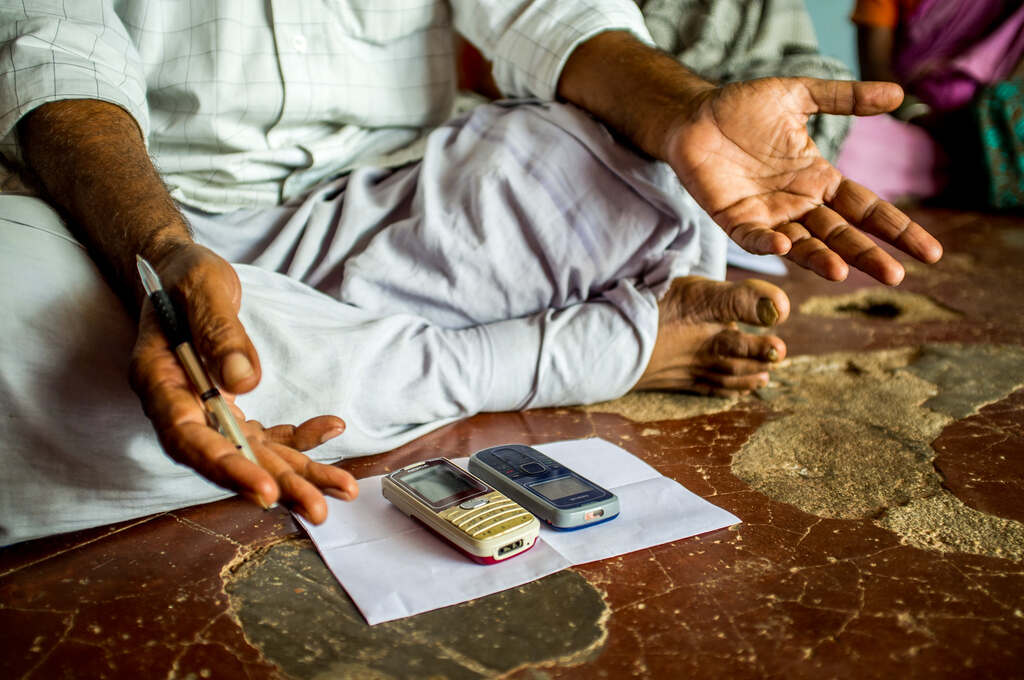In the last decade or so, online platforms, AI-powered services, and delivery portals have become an integral part of people’s day-to-day lives. The government’s Digital India campaign is an example of the rising importance of digital services.
Despite this push towards adoption of technology, lack of access to hardware and lack of know-how is causing the exclusion of many. To put this in perspective, according to the India Inequality Report 2022: Digital Divide by Oxfam, approximately 70 percent of the population has poor or no connectivity to digital technologies while more than 60 percent of Indian households remains digitally illiterate.
On our podcast ‘On the Contrary by IDR’, host Arun Maira spoke with Kiran Karnik and Osama Manzar on how access to and knowledge of technology is a factor of existing inequalities, and what the government can do to bridge the gap. Kiran Karnik is the former president of NASSCOM and has also worked at the Indian Space Research Organisation (ISRO). Osama Manzar is the founder and director of Digital Empowerment Foundation, a nonprofit that works on increasing digital literacy in India.
Below is an edited transcript that provides an overview of the guests’ perspectives on the show.
Digital technologies aren’t accessible to all
Osama: The power of real technology is not in inclusion, but in the exclusion that it causes. And this is systemic. I would like to explain this with an anecdote. When I was visiting a digital centre in Chirala, Andhra Pradesh, I saw that there was a long queue of people [with] INR 50, an Aadhaar card, and a phone in their hand. On enquiring further, they told me they were going to give this INR 50 to the service centre [to] update their Aadhaar card. [This is] the role technology plays in inclusion [but also in exclusion]. [People] are excluded if the Aadhaar does not match; they are excluded if [their] data is not updated; they are excluded from food, ration, pension, banking, and so on if by any chance this connectivity doesn’t work. And they’re paying for any discrepancy in [the system].
During COVID-19, the learning of more than 280 million children got affected due to the closure of schools.
So are we thinking of the exclusion that is taking place? Or are we [just] thinking [about] the government that has created a chance to serve so many people with the click of a button? But that click of a button is also excluding millions of people. During [the second wave of] COVID-19 [in India], for instance, the learning of more than 280 million children got affected due to the closure of schools. But did we have 280 million devices in the hands of those children for them to access online education? According to the data, 30 percent of the schools were supposed to have computers, but [these computers] weren’t functional.
When we create a digital system to increase efficiency, we design it [thinking about how many more] people will get additionally connected. But we don’t think [about] how many people are suffering because of being disconnected.
Kiran: Inequities are created through access, affordability, availability, ability to use it [technology]… The problem arises when we think of technology [as a] magic wand that [can] solve all our problems. And the difficulty is that our institutions and social systems are not looking at exclusion in the excitement of technology and what it does. You mentioned 280 million schoolchildren, but it’s not just [about the] big numbers. A society that cares for small numbers, a minority of any kind, is a society that truly cares. It doesn’t matter how small the number is, we should worry about who is excluded. But in our excitement about new technologies, we seem to have forgotten about this crucial aspect.
For example, [if there is] an old woman whose fingerprints are not discernible because they have worn off completely, you can’t exclude such a person. [Even if this constitutes] a small percentage of our population, you have to worry about them and your systems must take care of them.

Digital inequalities are exacerbated by system-level flaws
Kiran: I was one of those enthusiasts who thought that technology and the internet will make access to information more democratic. That it will help create a system where everybody can access everything, and enable horizontal, two-way communication among people…[but] that hasn’t quite happened. We’ve divided ourselves into echo chambers…and I think these concerns about where inequity is being created and divisions are being created are very serious concerns… [And] there are many problems that we need to worry about and take care of. [But] not all of this [can be] taken care of by technology; this requires a rejigging of the structures, the systems, the institutions. You might say we need to [fix the] sociology of what we do, not the technology of what we do.
Osama: It is not technology that makes you suffer, it is the unintentional flaw in the system that makes you suffer… The internet is very feminine. It is very inclusive and terribly democratic. But it is run by the male. That is the reason for its patriarchal design. And to make the internet smooth, inclusive, and democratic, it is important that its utilisation and governance rest in the hands of women.
Despite this, local communities are adapting
Osama: When we talk about how local communities use technology for their benefit, [it has] more to do with approach and contextualisation. We have [approximately] 50,000 villages that [have] no connectivity. They are in the dark zone. And yet, we know that in the last 10 years, access and connectivity have increased. We know that managing Wi-Fi connectivity and access doesn’t require [a] BTech, an MTech, or an MCA. There are barefoot wireless engineers who are managing technology [in villages], climbing towers and connecting Wi-Fi from one location to the other. The tower can be [made out] of bamboo; a small, salvaged metal pipe can become your tower on the top of your building and that can connect to somebody 10 kilometres away. We also have an unlicensed spectrum in the country [that] we can use for wireless connectivity. People are using Bluetooth to connect with each other, talk to each other, and create local networks. So these are the possibilities.
But we need stronger policies to ensure equitable access to technology
Osama: The government has created online systems [like] Aadhaar for efficiency. [However], people are [still being excluded and] not getting access to food, pensions, or their daily needs.
Both the government and corporates [have] stopped thinking [of] people as people. They think of people as consumers, as voters… A normal human being is being treated like a bot and is being targeted to spread information or misinformation.
Technology is as good as how you use it. Technology is as good as your policy.
There is not a single bad example of technological impact [on] the people [using it]. The negative example [comes from] how big systems are using technology. Whether it’s about tracking elections, [spreading] misinformation, or creating rumours using communication technology—you will see that all of them are top-down, not bottom-up. It is not the people who are misusing technology; it is the system that is underutilising technology by intention. And this is the reason that technology is as good as how you use it. Technology is as good as [your] policy. Technology is as good as [your dedication] to serve your community or citizens.
Why were 280 million children suddenly disconnected from the school and education system [during the pandemic]? [Despite the fact] that we have the technology [such as mobile phones] available in our hands to connect people, why did we not use it? [We need to] minimise the cost of hardware [and] minimise the cost of connectivity. [We need to] have [a] human rights approach to connectivity [and consider it] as basic infrastructure [for] our students.
Kiran: There are three or four specific things which I would like to touch upon as suggestions for the future. One is technology policy which must lay the framework for what we do with technology, how we use it, [for] what purpose, in what ways, and most importantly, how we use it to empower people. The second must be to create public platforms which are accessible to everybody and which can facilitate things such as easy payments, even easy credit for those who want it. And [if] there is data there, it can be analysed and shared to serve the needs of the people better.
[Third,] you can write volumes in terms of policy that takes care of market failures [when it comes to tech implementation in the country]. There’s a market failure of not serving the poor. There’s a market failure of devices which are unaffordable for children. And the last is the lack of competitiveness here. [So there is a need to] ensure competitiveness and competition, both. One is competitiveness in terms of price and delivery and reaching out to everybody—that’s part of competitiveness. Second is competition, not just for better service, but also competition on who can reach the last person.
You can listen to the full episode here.
—





